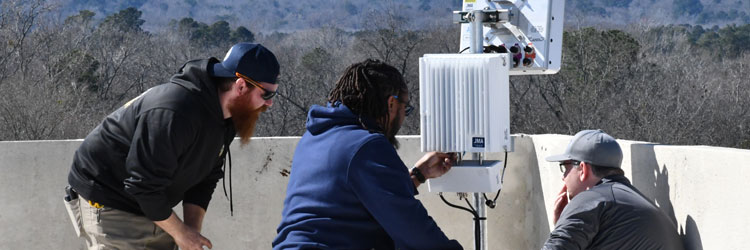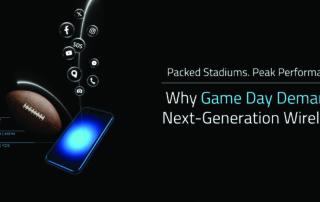Even before the popularity of Unlimited Wireless plans data usage at major sports and entertainment venues over the last 5 to 10 years has grown at astonishing rates. Most of that data usage is driven by the availability of social media on handheld devices because there is an expectation that fans or participants post, snap, tweet or live stream events so that friends can share each other’s moments. To satisfy venue guest, venue owners and the network operators are focused on providing an exceptional wireless experience and thus new and creative ways to deploy wireless technology continually emerge.
Wireless infrastructure in stadiums and sports venues has been around for about 15 years. The design of those early systems was driven by coverage with minimal antenna locations designed to cover broad areas. Systems today are driven by capacity with lots of antenna locations focused on smaller areas to ensure customers throughout the facility have the bandwidth they need.
One challenge caused by the increased number of antennas needed is where do you place them to preserve the aesthetics of the venue while meeting the need to provide coverage to only a specific area. Wi-Fi deployment in handrails and under seats began several years ago followed quickly by cellular antennas. Mobile Sports Report in their Summer 2018 Stadium Tech Report highlighted AT&T’s deployment of cellular wireless service using existing under seat Wi-Fi enclosures. Wi-Fi and Cellular equipment were installed separately in previous implementations. The significance is that the densification of cellular infrastructure will continue to be needed and the identification of ways to utilize existing infrastructure or coexist will help deliver increased capacity quicker and more efficiently.
Multi-beam antennas is another technology being used in more and more venues. Multi-beam antennas have been around for several years now. Because most venues are multi-purpose with limited options to deploy permanent wireless infrastructure on the event floor. Multi-beam antennas are being installed high above the event floor to create the narrow coverage zones needed to support capacity in these areas of the venue. As the name implies, multi-beam antennas have several antennas within each unit and thus do not need to be installed as densely as traditional antennas.
In addition to the improvements in antenna technology enabling the placement of antennas in places where they could not be placed before, digital DAS (Distributed Antenna System) products have allowed network operators to more efficiently distribute their capacity within large venues. The ability to optimally distribute capacity is because digital DAS are software-defined. Thus digital DAS allow network operators to allocate capacity dynamically. No longer are operators required to deploy costly base transceiver station (BTS) resources to cover dedicated areas of a facility which during peak usage require the capacity of a dedicated BTS but under normal circumstances only requires a fraction of that capacity. With digital DAS network capacity can be focused on the event floor during the event and shifted to concourses or parking areas before and after the event to follow user demand. The software-defined configuration also simplifies the process to add or adjust frequency bands which may be necessary occasionally as the network operators evolve their networks.
These antenna technologies, as well as the digital DAS, are only a few of the technologies used by wireless in-building solution designers to ensure user expectations are met in large venues. These solutions support 4G networks today, but the technology will support 5G networks in the future.
Pierson Wireless designs and deploys Wi-Fi, public safety and cellular DAS in large venues, multi-story buildings, and manufacturing facilities.























Leave A Comment